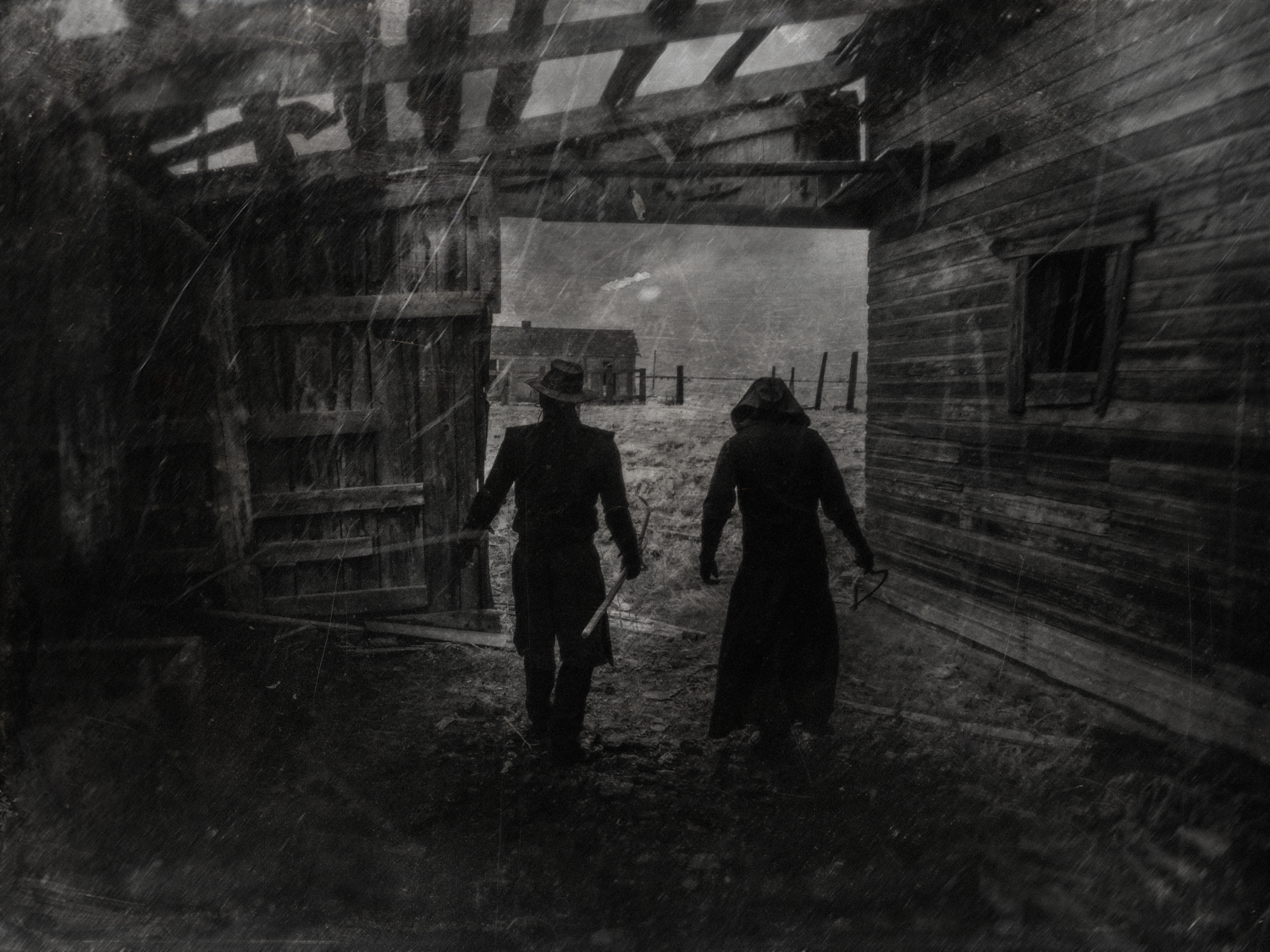Die amerikanischen Black-Metaller AORATOS rund um Mastermind Naas Alcameth (Nightbringer, Bestia Arcana, Akhlys) werden am 22. März ihr Debütalbum "Gods Without Names" via Debemur Morti auf die Welt losgelassen. Damit Ihr nicht die Katze im Sack kaufen müsst, dürfen wir Euch exklusiv einen Stream der Langrille präsentieren!
Im Gegensatz zu den esoterischen und musikalischen Höhen der pfeilschnellen Riffs von Nightbringer, konzentriert sich Naas mit seinen Kollegen (unter anderem auch wieder Menthor an den Drums) mit AORATOS auf einen geerdetener Black-Metal-Sound, der von Drone- und Dark-Ambient-Elementen angereichert wird. Das passt zum lyrischen Konzept, das sich um die namlosen Geister und Dämonen dreht, die in gewissen Orten, zum Beispiel Ruinen, hausen und Furcht und Schrecken verbreiten.
Aufgenommen wurde das Album in den Promethean Forge Studios und wie immer hat sich Dave Otero von Flatline Audio um das Mixing und Mastering gekümmert. Das Cover-Artwork selbst wurde von Bahrull Marta gestaltet.
AORATOS sind:
Naas Alcameth - Gesang, Gitarre, Synths, Lyrics
Nox Corvus - Gitarre, Gesang
Menthor - Drums
Chthonia - Gesang
Wem die Scheibe gefällt, der kann sie sich gleich hier vorbestellen!
Wir haben uns außerdem auch noch mit Naas zusammengesetzt, um in einem kurzen Interview über das Streamen von Alben und über seine neuestes Projekt AORATOS zu quatschen! Eine längere Version des Interviews findet Ihr dann in unserer kommenden Ausgabe #120, die am 30. April erscheint:
Your first album “Gods Without Name” will be streamed exclusively in Germany via Legacy (www.legacy.de) and, of course, in accordance with your label Debemur Morti. What do you think about the streaming of music in the 21st century? Is it helpful in order to spread your music? Or does it hurt you more? And do you personally stream a lot of music online?
I have mixed feelings about it honestly. We are living in an age of convenience, where everything has been digitized which brings a high amount of accessibility to nearly all, but at the same time also diminishes other aspects. There is something to be said about art that perhaps isn’t easily accessible to one and all on a whim, but requires a bit of “in the know” fervour, intention and devotion to discover and get your hands on. There is also much to be said about holding a physical presentation of art versus staring at an album cover on a screen. I do stream music, but I also make it a point to purchase physical copies of the albums I like.
For all art I know from you it is helpful and basically necessary to take a close look at the cover-artwork, the layout/symbolic layer and, of course, also the lyrics in order to fathom what the idea behind an album is. How do you view this in the context of the streaming of an album? Does something get lost when people simply listen to it online on their computers without digging deeper into the conceptual ideas behind AORATOS?
Inevitably, if you wish to fully comprehend the entity entire, yes. You might get a close approximation but with elements as vital as lyrics, per example, you would not be able to see the big picture.
The band photos of AORATOS are very different from those of Nightbringer or Akhlys and show an eerie rural environment which reminds oneself of David Lynch and Twin Peaks in particular. What role does the rural environment and lifestyle play in the art of AORATOS? Why is this specific aesthetic so present in your band photos?
This sort of rural darkness is essential to AORATOS as the band is based on concepts such as the “genius loci” of shunned, forgotten, and or abandoned places as well as old and uninterrupted pastoral haunts. Others are relegated to places such as the filed at the time of the harvest or the barren plot that follows approaching the winter solstice. These locations are seen as places of power where the presiding spirits often emanate a presence that to us is quite alien and dreadful. That dread is also a signifier and can lead to an interaction or dialogue between “self” and “Other” within ecstatic moments where the division between the former and the latter may disappear. This is all essential and further contextualized through a certain currents that draw heavily from ceremonial magic, as well as old world European and American “witchcraft”, thus the chosen aesthetic.
When we give “Gods Without Name” the first spin, what shall our environment be like? What is the perfect atmosphere in order to listen to the AORATOS-debut?
I would suggest a place that is quiet and dark. A solitary drive through the woods or fields at night would also be ideal.


